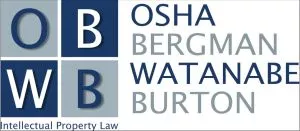The U.S. Court of Appeals for the Federal Circuit recently issued a significant opinion in AMS-OSRAM USA Inc. v. Renesas Electronics America, Inc.,1 clarifying important aspects of trade secret remedies applying Texas trade secrets law. While grounded in a long-running dispute over ambient light sensor technology to adjust screen brightness, the court's opinion provides broadly applicable guidance on reverse engineering, head-start damages, and dual-track recovery under misappropriation and breach of contract theories.
Background: A Decade-Long Dispute Over Sensor Technology
The dispute traces back to confidential merger talks in 2004 between AMS-OSRAM (then TAOS) and Intersil (now Renesas). During due diligence, TAOS shared sensitive technical information about its ambient light sensor architecture. Although the merger never materialized, Intersil used the confidential technical information to accelerate development of competing sensors, eventually winning key design slots at Apple for devices like the iPod Touch and iPhone 3G. TAOS sued in 2008, asserting trade secret misappropriation and breach of a non-disclosure agreement. After multiple trials and appeals, the Federal Circuit's 2025 decision addressed only remedies—not liability, which is no longer contested.
When Is a Trade Secret No Longer a Secret? Reverse Engineering Sets the Clock
The Federal Circuit held that a trade secret becomes "properly accessible" when it could have been reverse-engineered, not when it was. Here, although Intersil didn't reverse-engineer the TAOS product until early 2006, the court held the trade secret became accessible in February 2005—the date when TAOS's product incorporating the trade secret entered the public market and could have been reverse-engineered in about a week using standard techniques.
In trade secret cases, a "head-start period" is the amount of time it would have taken the defendant to independently develop the misappropriated information through lawful means—such as reverse engineering or independent invention. Courts use it to limit the scope of monetary relief. Defendants must be stripped only of the unfair competitive advantage gained during the time it would have taken them to develop the technology without misconduct.
In practice, Plaintiffs must frame their trade secret duration arguments carefully—courts may now set shorter protection windows if the information was publicly embodied in a product that could readily be reverse-engineered. For defendants, this decision strengthens a key limitation defense in damages calculations.
Design Wins Are Profitable—and Compensable
While Intersil's actual sales of its infringing sensor occurred after the head-start period expired, the Federal Circuit affirmed that profits from those sales could be disgorged. Why? Because the crucial vendor approval—or "design win"—from Apple occurred during the head-start period, and it was that early competitive placement that secured the later sales.
In highly integrated tech supply chains, becoming an approved vendor during the product development phase is often the decisive business milestone. Here, Intersil's early use of misappropriated technology helped it win a supplier slot in Apple's product lineup. The court viewed the ensuing sales as the fruit of that early and unfair head start—even if the revenue materialized later.
The key takeaway from the court's holding is that disgorgement isn't limited to the head-start period's duration if a plaintiff can show that the commercial outcome was secured by misconduct occurring during that period. Plaintiffs should document causation between early misappropriation and later profits; defendants should consider attacking the causal chain rather than the calendar.
No Double Dipping, But Distinct Injuries Mean Dual Recovery
The Federal Circuit also held that a plaintiff may recover both for trade secret misappropriation and breach of contract—so long as the damages compensate different injuries. In this case, trade secret damages were awarded to AMS-OSRAM for disgorgement of Intersil's profits from sales of one specific product line (the ISL29003), tied to misappropriation that led to the Apple iPod Touch win. Separately, AMS-OSRAM recovered breach of contract damages in the form of a reasonable royalty for Intersil's use of other confidential information (not constituting trade secrets) to develop and sell different sensor products that incorporated aspects of TAOS's protected technology.
Because the damages awards addressed different products and arose from distinct theories of liability—one tort-based, one contract-based—the court found no improper overlap. The contract breach did not relate to the same profits disgorged under the trade secret claim.
Clients should consider pleading and proving trade secret and contract claims in parallel. With careful damage segmentation, multiple theories may yield multiple, non-duplicative recoveries. Defendants should analyze whether claimed damages are truly independent or mask overlapping injury.
Takeaway for Clients: Strategic IP Enforcement and Defense Require Nuanced Damages Planning
The AMS-OSRAM decision reflects the increasingly sophisticated view courts are taking of trade secret remedies. Whether enforcing or defending trade secret claims, businesses should take a proactive approach to remedy planning. This includes carefully documenting what information is publicly accessible in product disclosures to anticipate or rebut reverse engineering defenses. Internal R&D timelines should be tracked to support or challenge the duration of any claimed head-start period. It is equally important to maintain clear records that link any alleged misappropriation to specific commercial outcomes, such as sales or design wins. Finally, companies should distinguish among types of confidential information, recognizing that not all proprietary material qualifies as a trade secret—some may be enforceable only through contract.
As trade secret enforcement continues to expand in scope and sophistication, understanding the remedy architecture is as important as proving the underlying misappropriation.
Footnote
1. --- F.4th ----, 2025 WL 1007086 (Fed. Cir. 2025).
The content of this article is intended to provide a general guide to the subject matter. Specialist advice should be sought about your specific circumstances.



